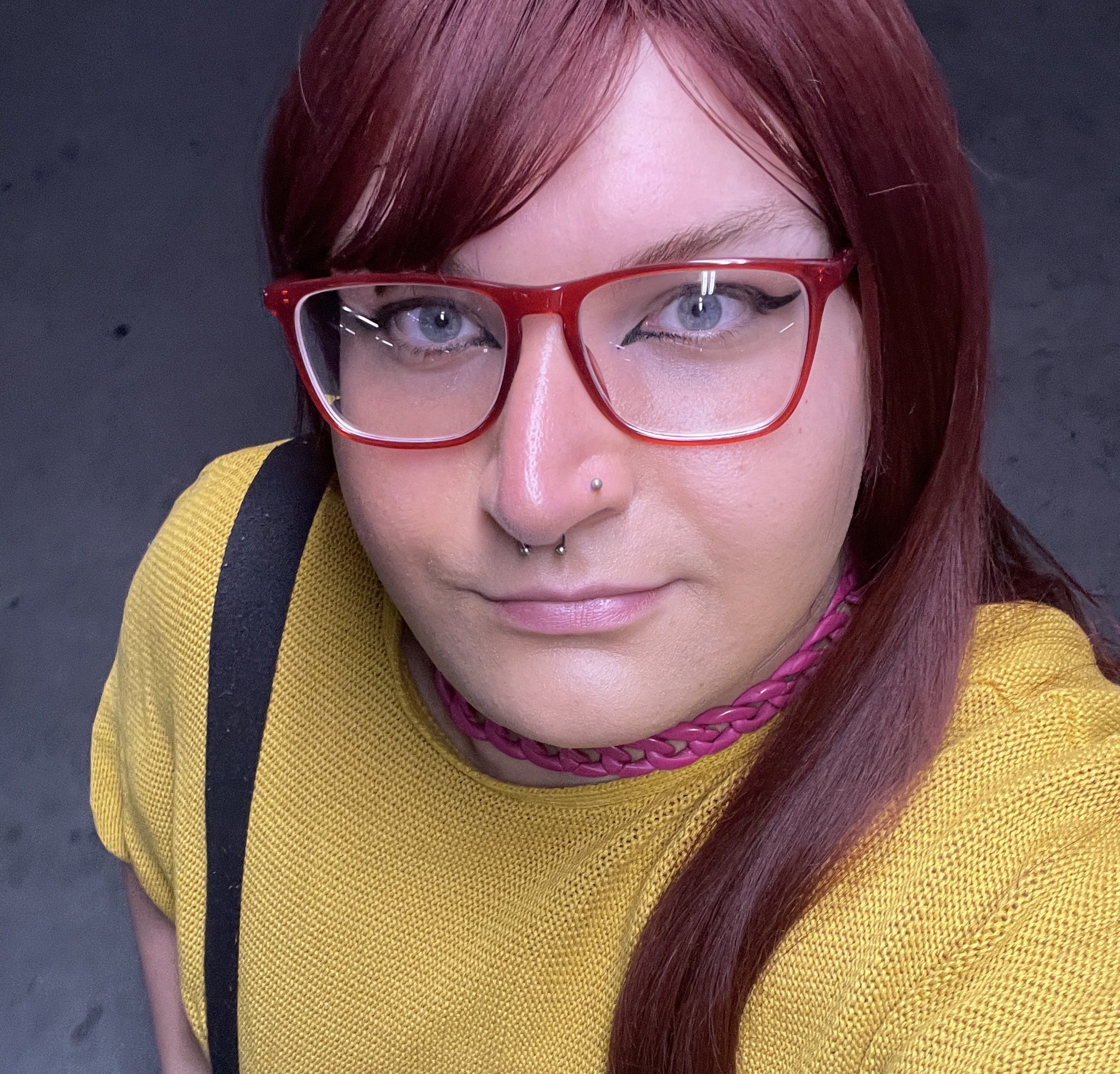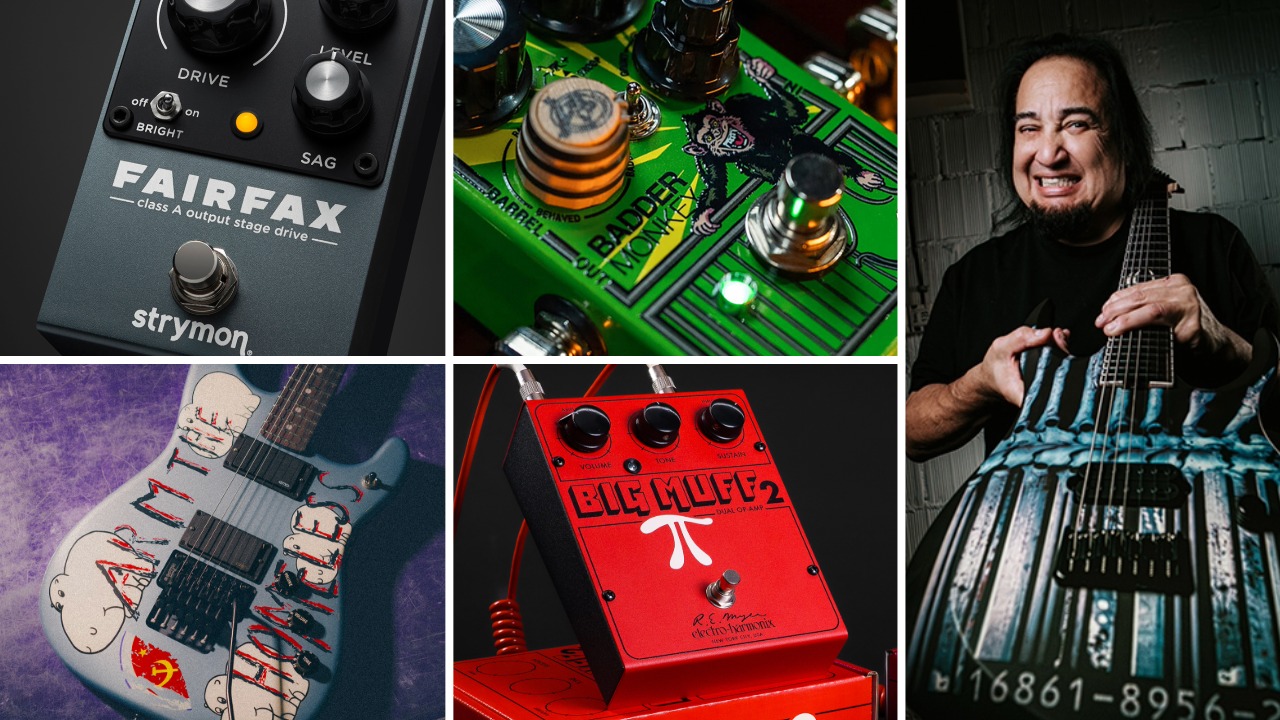The Jungle Giants’ Sam Hales: “Lockdown was sad and weird, but it was definitely productive”
On the brisk and bubbly new album from The Jungle Giants, the guitar plays a very ~interesting~ role

Despite its inception being marked by isolation, insularity and introspection, Love Signs – the pastel-tinged fourth album by indie-pop superstars The Jungle Giants – is distinctly extroverted. It’s a cinematic, scintillating ode to human connection, spun through a web of prickly, crystalline synths, snappy percussion, and all-over glossy, sugary production.
“But Matt,” you shout! “Isn’t this Australian Guitar? How did a story about a dance-pop record like this end up here!?” Okay, don’t flip the page just yet – yes, the guitars on Love Signs are subtle, and in the case of some tracks altogether indiscernible. But the guitar is still a critical element in The Jungle Giants’ repertoire – after all, the band’s got two, count ‘em, two, guitarists – and it was certainly critical in the album’s creation.
As frontman Sam Hales explains it, the new record marked his first foray into the world of unassisted production, allowing him to explore far beyond the boundaries imposed on the soundscapes of his previous output. Every new idea came with an opportunity to experiment – with new sounds, new techniques, new styles… There was nobody there to tell him something shouldn’t, let alone couldn’t, be done.
That meant the guitar become more than just a guitar. Because the instrument is actually everywhere in Love Signs – it’s just used in ways that makes it sound like anything except what we’ve come to know as “the sound of a guitar”. It can be a bit of a polarising listen, if what you’re expecting is the same incarnation of The Jungle Giants heard on 2015’s Speakerzoid. But for those willing to open their minds and indulge in something a little more ‘out there’, Love Signs has a lot to offer.
Now, let’s catch up with Hales and learn just how he brought this crazy lil’ monster to life.
I was reading about how that first lockdown actually came at a pretty good time for you, because it meant you were able to fully knuckle down on songwriting.
It was a bit weird. When I’m recording, I’m a real focussed, kind of regimented person. I have a little routine that I stick by, so it’s never an issue getting things done. One of the bigger benefits was that no touring came up, and over the last couple of years, that’s really gotten in the way of me wanting to record and write without distraction. So when all the touring stopped, I was just like, “Woah, I can actually finish the record now!” Because when I was looking at my schedule for 2020, it was ridiculous.
My manager was like, “Okay, you’ve got this giant run of touring, and then we’ll put the record out.” And I was just like, “Dude, I don’t know if there’s any time to record.” We tallied it up, and in the entire year, there was only three-and-a-half weeks where we had nothing going on. I was just so stressed out. And then when everything [with COVID] happened, I was just like, “Oh my God.” It was like a sigh of relief. I mean, it was sad and weird, but it was definitely productive. So now I can reap the benefits of that, because I’ve finally got an album to listen to!
All the latest guitar news, interviews, lessons, reviews, deals and more, direct to your inbox!
Were there any goals you wanted to hit, or was the operative just to make as many bangers as you could?
I definitely had some goals. I kind of wanted to go the opposite way of it all being just bangers. I wanted them all to have appeal, but I focussed on something different this time, rather than just that ‘poppability’ or, y’know, radio vibe. I wanted to build an album that felt really unique in and of itself, where all the songs were super connected, and they were dance-y, and they all had an overarching message.
I guess in my head I wanted to make a record where if you played one song, it sounded like it was definitely from that album. I think I’d attempted that before, but I don’t think I’d ever really nailed it. So with this record, I spent a bit more time getting it done. I’d been writing and recording in these little bouts over the last couple of years, and every now and then, a song would come through and I’d get really excited about it. I’d be like, “Okay, boom. That’s at the top of the list now, and songs kind of have to sound like that.” And then as I kept adding songs to this list, the album got a bit more complex, and it was all really sticking together.
I wanted that kind of fluidity to exist with this album. I wanted it all to flow together, and I wanted it to be self-referential. Once I was able to get, like, seven tracks together, I really felt like I had the direction and the energy of the record done. It was kind of fun at that point – I remember saying to friends, “I know what I’m doing now!” Y’know, it had finally kind of clicked.
Did it feel like you’d built up this sort of musical world you were then free to explore?
Yeah, exactly. And I felt like once I had a couple of songs going, this momentum kind of built up. I had a lot more confidence – some of the songs were really sassy, they were almost from a character’s perspective. They were really lovey, really positive tracks, but they had a lot of sass to them. I had this newfound confidence, so it was a bit easier to keep going in that direction, to really follow through with what I was shooting for.
This is easily the most non-guitar-y record you’ve made, but did you still have the guitar with you in the writing process?
I did, yeah! This time I used a lot more piano, and my writing process changed a lot. With previous records, I would kind of sit with the guitar and use that as my crutch, but this is the first record where I played everything myself, so a big part of that process was starting off with the piano or the guitar, and then getting really deep into the session in Logic and building the track from there. It definitely became more of a production-driven process.
There was one sound that really stuck this record together – I’ve kind of hidden, really hard-panned to the right and really hard-panned to the left, these super thin guitars getting played into one of those tiny little micro-amps; y’know those little battery-powered things? That’s just for a bit of attack and a bit of high-end. All the bass sounds are really heavy, maybe from a Minilogue or an M1, and then really quietly, there’s these little thin guitar tracks over them.
When I found that sound, I was like, “Okay, cool, that’s the whole record right there.” So there’s less guitar, yes, but the guitar is used more cleverly.
You’re using the guitar as a tool to give the track colour or character, rather than just drive the song.
Exactly, yeah. And this time around, I wanted to be more mindful about what was actually in the track. I wanted a bit more control over what was going into the tracks so I could make everything sound good. So I locked a bit more of my focus onto what was happening – and if it is happening, for what reason. How can I make it sound good? I guess it was more that I was producing properly for the first time.
How do you see these songs translating to the stage in that full-band setup?
It’s a funny thing because for like 50 percent of the record, I’m not playing guitar. I’ve kind of written myself out of an instrument for a bunch of the songs, but I really love that because like I was saying, a lot of these songs have a lot of sass to them, so I’ve found that I’m dancing a lot more when we play them. I’m kind of finding my feet onstage, and I don’t really need something in my hands anymore. I used to rely on the guitar to get me through a show, but now I like to sass around and do a little strut. And then I feel more thankful when I do get the guitar back in my hands

Ellie Robinson is an Australian writer, editor and dog enthusiast with a keen ear for pop-rock and a keen tongue for actual Pop Rocks. Her bylines include music rag staples like NME, BLUNT, Mixdown and, of course, Australian Guitar (where she also serves as Editor-at-Large), but also less expected fare like TV Soap and Snowboarding Australia. Her go-to guitar is a Fender Player Tele, which, controversially, she only picked up after she'd joined the team at Australian Guitar. Before then, Ellie was a keyboardist – thankfully, the AG crew helped her see the light…
